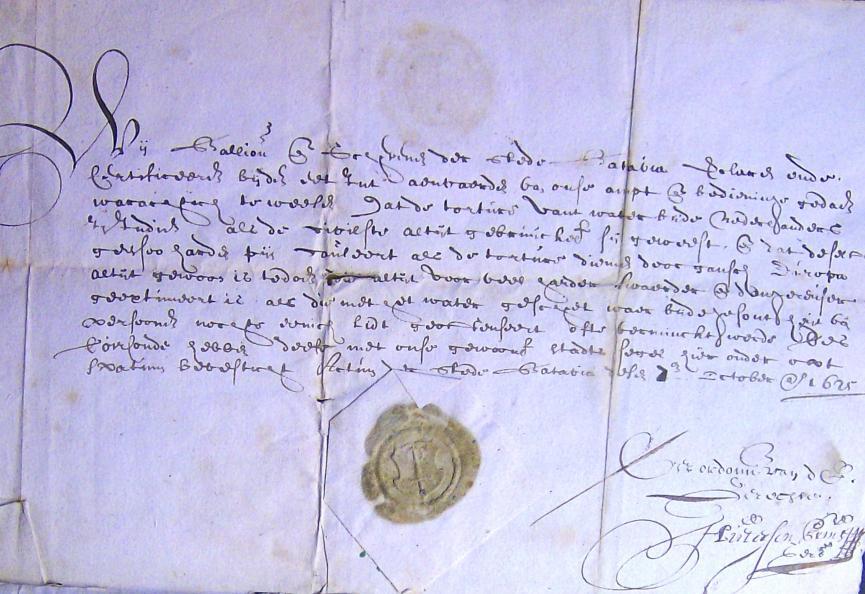Declaraton on torture by the bailiff of Batavia, 7 October 1625
Analysis
In this memorandum, the senior legal official in Batavia, the bailiff, responded to English complaints about waterboarding. He explained, first, that torture was common and was used widely (and legally) across the Dutch empire in Asia. But he also attempted to distinguish waterboarding from other kinds of more severe torture. In this way, he asserted “that the torture with water” is the “most civil” of all such techniques because it causes “less pain than the torture generally used across Europe, which is always considered more severe, heavier and more dangerous than the one with water, in which neither the health of the person nor any limb of their body is hurt or mutilated.” Thus it was fundamentally different, this document, asserts from other kinds of more brutal torture that might result in the breaking of bones or the severing of limbs.

"The bailiff and sheriffs of the town of Batavia declare and certify on the oath we took at the beginning of our post and employment that it is true that the torture with water has always been used by the Dutch in India as being the most most civil and causes less pain than the the torture generally used in all Europe, which is always looked upon as much more painful, much harder and more dangerous than the one with water, whereby neither the health of persons nor any member of their body is hurt or mutilated, To certify this we have fixed our usual seal of the town at the bottom hereof."

